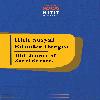İmam Hatip Lisesi Öğrencilerinin Kur'an-ı Kerim Dersine Yönelik Motivasyonlarının İncelenmesi
A Study of Imam Hatip High School Students' Motivation for the Qur'an Course
___
- Acuner, Hacı Yusuf. “Öğrencilere Göre Seçmeli Kur’an-ı Kerim Dersi: Artvin İli Örneği”. İnsan ve Toplum Bilimleri Araştırmaları Dergisi 5/4 (2016), 850-871.
- Akandere, Mehibe vd. “Ortaöğretim Öğrencilerinin Beden Eğitimi Dersine Yönelik Tutumları ile Akademik Başarı Motivasyonlarının İncelenmesi (Konya Anadolu Lisesi Örneği)”. Selçuk Üniversitesi Sosyal Bilimler Enstitüsü Dergisi 24 (2010), 1-10.
- Akbaba, Sırrı. “Eğitimde Motivasyon”. Kazım Karabekir Eğitim Fakültesi Dergisi 13 (2006), 343-361.
- Algur, Hüseyin. Hafızlık Eğitimi Alan Bireylerin Motivasyon ve Psiko-Sosyal Durumları. İstanbul: DEM Yayınları, 2019.
- Alkan, İclal – Bayri, Nevzat. “Fen Öğrenmeye Yönelik Motivasyon ile Fen Başarısı Arasındaki İlişki Üzerine Bir Meta Analiz Çalışması”. Dicle Üniversitesi Ziya Gökalp Eğitim Fakültesi Dergisi 32 (2017), 865-874.
- Altun, Mukadder. Öğretmen Görüşlerine Göre Seçmeli Kur’an Dersleri -Nitel Bir Araştırma-. Rize: Recep Tayyip Erdoğan Üniversitesi, Sosyal Bilimler Enstitüsü, Yüksek Lisans Tezi, 2019.
- Aşlamacı, İbrahim. “İHL Öğrencilerinin Meslek Dersleri ve Meslek Dersi Öğretmenlerine Yönelik Tutum Düzeyleri Arasındaki İlişkinin İncelenmesi”. Dinbilimleri Akademik Araştırma Dergisi 17/1 (2017), 197-232.
- Azizoğlu, Nursen – Çetin, Gülcan. “6 ve 7. Sınıf Öğrencilerinin Öğrenme Stilleri, Fen Dersine Yönelik Tutumları ve Motivasyonları Arasındaki İlişki”. Kastamonu Eğitim Dergisi 17/1 (2009), 171-182.
- Bozkurt, Sema Nur. Ortaokul-İmam Hatip Ortaokulu Kur’an-ı Kerim Dersi Öğretim Programının İncelenmesi (Afyonkarahisar Örneği). Isparta: Süleyman Demirel Üniversitesi, Sosyal Bilimler Enstitüsü, Yüksek Lisans Tezi, 2019.
- Ceylan, Erhan vd. “Ortaokul Öğrencilerinin Merak, Tutum ve Motivasyon Düzeylerine Göre Fen Bilgisi Dersi Başarılarının İncelenmesi”. Uşak Üniversitesi Sosyal Bilimler Dergisi 9/1 (2016), 39-52.
- Çakmak, Ahmet – Ecer, Münir. “Seçmeli Kur’an-ı Kerim Dersine Yönelik Motivasyon Ölçeğinin (SKKMÖ) Geliştirilmesi ve Çeşitli Değişkenler Açısından İncelenmesi”. Hitit Üniversitesi İlahiyat Fakültesi Dergisi 19/2 (2020), 679-707.
- Çiftçi, Metin – Şimşek, Eyüp. “İmam Hatip Ortaokulu Öğrencilerinin Okul Motivasyonlarının Çeşitli Değişkenler Açısından İncelenmesi (Erzurum İli Örneği)”. Marife Dini Araştırmalar Dergisi 21/1 (2021), 279-301.
- Daşkın, Abdurrahman. İmam Hatip Liselerinde Kur’an-ı Kerim Derslerinde İzlenen Yöntemler. Kayseri: Erciyes Üniversitesi, Sosyal Bilimler Enstitüsü, Yüksek Lisans Tezi, 2007.
- DÖGM, Din Öğretimi Genel Müdürlüğü. “Anadolu İmam Hatip Liseleri Kur’an-ı Kerim Dersi Öğretim Programı”. Erişim 1 Nisan 2022. http://dogm.meb.gov.tr/www/ogretim-programlari/icerik/14
- Durmuş, Muhammet Emin – Karaman, Mehmet Ali. “İmam Hatip Lisesi Birinci Sınıf Öğrencilerinin Kur’an Dersine Yönelik Görüşlerinin Değerlendirilmesi”. ICPESS 2016 Proceedings Book. ed. Fatih Savaşan vd. İstanbul: Politik, Ekonomik ve Sosyal Araştırmalar Merkezi (2016), 275-294.
- Erdem, Ali Rıza - Gözüküçük, Meral. “İlköğretim 3. 4. ve 5. Sınıf Öğrencilerinin Türkçe Dersine Yönelik Motivasyonları ve Tutumları Arasındaki İlişki”. Pegem Eğitim ve Öğretim Dergisi 3/2 (2013), 13-24.
- Gündoğdu, Yusuf Bahri. “Seçmeli Din Derslerini Tercih Eden Öğrencilerin Tercihlerini Etkileyen Faktörler: Ordu Örneği”. Din Bilimleri Akademik Araştırma Dergisi 15/2 (2015), 121- 155.
- Günel, Eyüp. Ortaokul Öğrencilerinin Seçmeli Kur’an-ı Kerim Dersine Yönelik Tutumları (Erzurum İli Örneği). Erzurum: Atatürk Üniversitesi, Eğitim Bilimleri Enstitüsü, Yüksek Lisans Tezi, 2019.
- Meydan, Hasan. “Din, Ahlak ve Değerler Alanı Seçmeli Derslerinin Öğrenci Görüşleri Doğrultusunda Değerlendirilmesi”. Atatürk Üniversitesi İlahiyat Fakültesi Dergisi 40 (2013) 219- 250.
- Millî Eğitim Bakanlığı. (2016). Anadolu İmam Hatip Liseleri Kur’an-ı Kerim Dersi Öğretim Programı. Ankara: MEB Yayınları.
- Mücahit, Mustafa. "Öğrencilerin Gözüyle İmam Hatip Lisesi Meslek Dersleri ve Meslek Dersleri Öğretmenleri (Sivas İli Örneği)". Cumhuriyet Üniversitesi Edebiyat Fakültesi Sosyal Bilimler Dergisi 41/1 (Haziran 2017), 73-99.
- Osmanoğlu, Cemil – Göksun,Ayşe Nur. “Hafızlık Eğitiminde Başarı ve Motivasyon”. Hafızlık Eğitimi Üzerine Araştırmalar. ed. Cemil Osmanoğlu – Ömer Özbek. 117-201. Kayseri: Kimlik Yayınları, 2019.)
- Özdamar, Kazım. Eğitim, Sağlık ve Sosyal Bilimler İçin SPSS Uygulamalı Temel İstatistik. Eskişehir: Nisan Kitabevi, 1999.
- Scheffé, Henry. “A ‘Mixed Model’ for the Analysis of Variance”. The Annals of Mathematical Statistics, 27/1 (Mart 1956), 23-36.
- Seçer, İsmail. SPSS ve LISREL ile Pratik Veri Analizi: Analiz ve Raporlaştırma. Ankara: Anı Yayınları, 2015.
- Sezgin Selçuk, Gamze. “Tarama Yöntemi”. Eğitimde Araştırma Yöntemleri. ed. Haluk Özmen, Orhan Karamustafaoğlu. 140-161. Ankara: Pegem Yayınları, 2.basım, 2019.
- Sümer, Nebi. “Yapısal eşitlik modelleri: Temel kavramlar ve örnek uygulamalar”. Türk Psikoloji Yazıları 3/6 (2000), 49-74.
- Şimşek, Ömer Faruk. Yapısal Eşitlik Modellemesine Giriş Temel İlkeler ve LISREL Uygulamaları. Ankara: Ekinoks yayınları, 2007.
- Tabachnick, Barbara G. – Fidell, Linda S. Using Multivariate Statistics. Boston: Pearson, 2007.
- Tavşancıl, Ezel. Tutumların Ölçülmesi ve SPSS ile Veri Analizi. Ankara: Nobel Yayınları, 2005.
- Türkben, Tuncay – Gündeğer, Ceylan. “Beşinci Sınıf Öğrencilerinin Okuduğunu Anlama, Okuma Motivasyonu ve Türkçe Dersine Yönelik Tutumları Arasındaki İlişki”. Ana Dili Eğitimi Dergisi 9/3 (2021), 871-888.
- Ulusoy, Ayten (ed.). Gelişim ve Öğrenme. Ankara: Anı Yayınları, 5.Baskı, 2006.
- Wheaton, Blair vd. “Assessing Reliability and Stability in Panel Models”. Sociological Methodology 8 (1977), 84-136.
- Yaşlılıoğlu, M. Murat. “Sosyal Bilimlerde Faktör Analizi ve Geçerlilik: Keşfedici ve Doğrulayıcı Faktör Analizlerinin Kullanılması”. İstanbul Üniversitesi İşletme Fakültesi Dergisi 46 (2017), 74-85.
- Yılmaz, Nazif. İmam Hatip Liselerinde Kur’an-ı Kerim Öğretiminde Yeni Yöntemler ve Materyal Kullanımı. Bursa: Uludağ Üniversitesi, Sosyal Bilimler Enstitüsü, Doktora Tezi, 2021.
- Yüksel, Yakup. “İmam Hatip Liselerinde Kur’an Eğitimi Üzerine Bir Araştırma (Tekirdağ Örneği)”. Namık Kemal Üniversitesi İlahiyat Fakültesi Dergisi 2/1 (2016), 9-29.
- ISSN: 2757-6957
- Yayın Aralığı: 2
- Başlangıç: 2020
- Yayıncı: Hitit Üniversitesi
19. Yüzyıl İstanbul’unda Bir Erken Evlilik Olayı veya Küçük Nesibe’nin Nikâh Serencamı
Musa Carullah Bigiyef ve İslam Kongreleri (1926-1931)
Altın Sektöründe Elektronik Ticaret İşlemleri ve Fıkhî Değerlendirmesi
Çankırı Müzesi’nde Bulunan Tekke Şamdanları
Mekânın Yaratılışı, Mekânda Yaratılış: Yaratılış Anlatılarında Evrenin Aporetik Kökeni
Bilişsel Çelişki ve Sekülerleşme Teorileri Işığında Başörtüsünü Çıkarma Davranışının İncelenmesi
Din ve Ahlak Eğitimine Deweyci Bir Yaklaşım
Nesil Tartışmalarının Kronik Problematiği: Dindar Orta Sınıf X ve Y Nesli Örnekleminde Nesil Algısı
